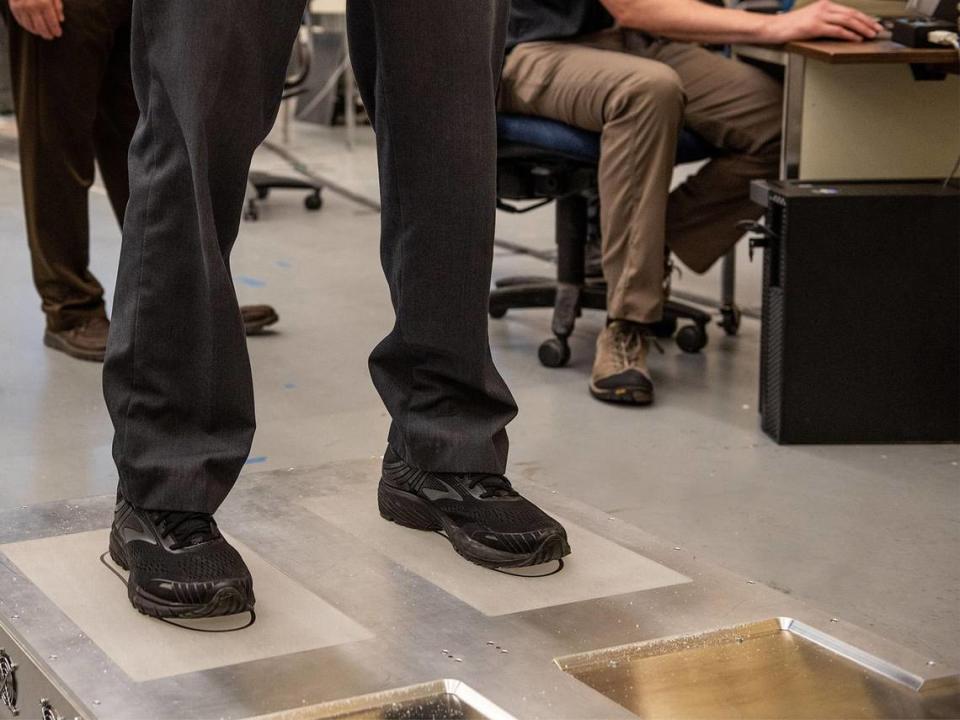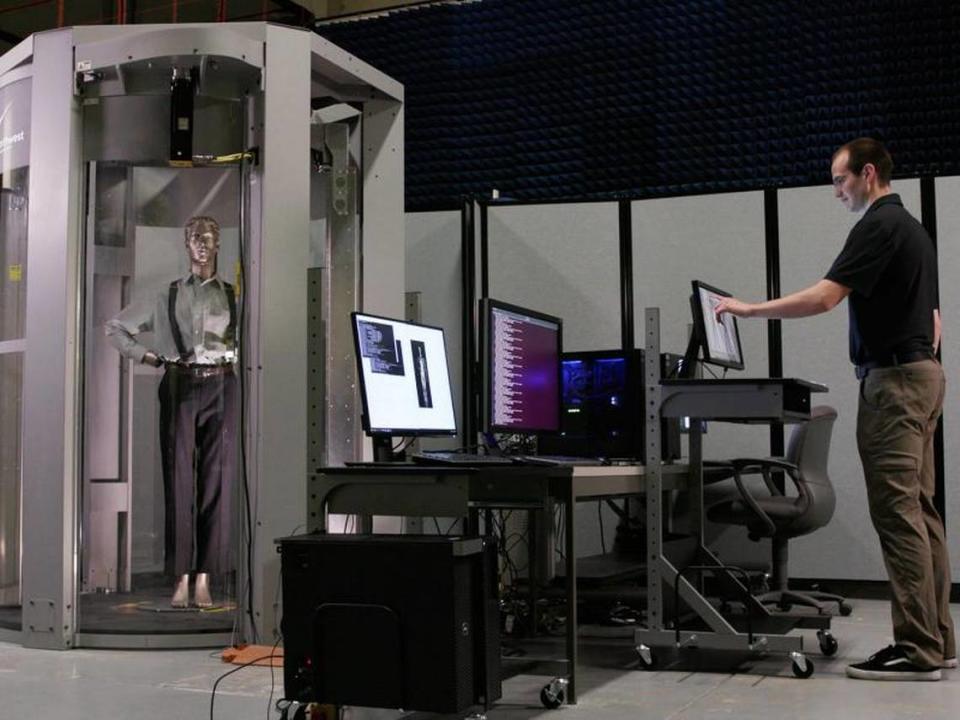Technology from Washington’s PNNL could make taking shoes off at the airport history
The inconvenience of taking off your shoes to go through a security check at airports may become nothing but a memory.
Instead, departing passengers could step onto a small platform that would use electromagnetic waves to check for any object hidden inside shoes that could pose a threat onboard.
Two seconds later, quicker than passengers now can put their shoes back on, the security check would be done.
Pacific Northwest National Laboratory in Richland has licensed technology for the shoe scanner it developed to Liberty Defense Holdings, a concealed weapons detection company based in Georgia.
The Department of Energy national laboratory developed the original holographic millimeter wave scanning technology that’s been widely used at airports worldwide for 15 years to check departing passengers for weapons or explosives concealed under their clothes.
The technology was under development as early as 1993, but the 9/11 attacks in 2001 brought new urgency to airport security and funding for the project.
Working with the U.S. Department of Homeland Security, researchers in Richland, Washington, now have expanded and advanced the capabilities of the original scanners.

The result is a next-generation, high-definition scanner that can find even smaller threats with fewer false positives, says PNNL.
In the process, they have adapted the same technology to screen passenger shoes while they are being worn, rather than placing them in a plastic bin and sending them through an X-ray machine.
Faster, better scanning
Just months after the 9-11 attacks Richard Reid boarded an American Airlines flight from Paris to Miami with homemade bombs hidden in his shoes that, if detonated, would have caused the plane to crash.
During the flight, crew members and passengers noticed him trying to light the fuse and he was restrained without setting off the bomb.

The new shoe scanning technology could potentially speed up the passenger screening process by 15 to 20 percent, said Bill Frain, chief executive officer of Liberty Defense Holdings.
“Streamlining security processes, while still detecting threats and keeping people safe, is a win-win proposition,” he said.
PNNL’s improved full-body scanner, the H-D Advanced Imaging Technology, also has been licensed to Liberty Defense Holdings.
The technology can provide higher resolution images, which should mean more potential threats detected with fewer false alarms than the original technology now used at airports.

“Reducing false alarms and the secondary screenings they trigger means less direct contact between travelers and security personnel,” said Dave Sheen, who manages the millimeter wave technology program at PNNL.
Liberty Defense Holdings plans to eventually integrate the shoe scanning technology into the base of the next generation full-body scanners.
“Eventually, the end goal would be to move along through a tunnel where you’re being screened, while you’re moving towards the airport gate,” said Mark Jones, a PNNL electrical engineer.

